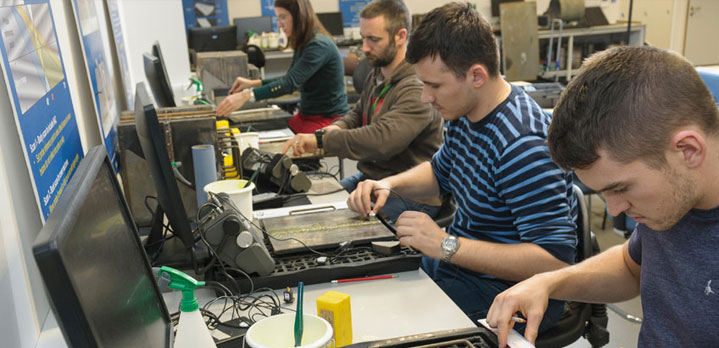Fri, 04 October, 2024
Ultrasonic Testing (UT) is a widely used non-destructive testing (NDT) technique that measures the thickness of materials and identifies internal flaws such as cracks or corrosion. By using high-frequency sound waves to penetrate a material, UT provides accurate measurements without damaging the object being tested.
The process of ultrasonic thickness inspection involves several steps:
- Probe Placement: A technician places a transducer (also called a probe) on the surface of the material. This transducer generates high-frequency sound waves that penetrate the material.
- Sound Wave Transmission: These sound waves travel through the material until they encounter an interface, such as a defect or the back surface of the material.
- Reflection of Waves: When the sound waves hit the interface, part of the energy is reflected back to the probe.
- Time Measurement: The time it takes for the sound waves to travel to the interface and return is measured.
- Thickness Calculation: The material's thickness is calculated based on the speed of sound in the material and the time it took for the waves to travel.
Key Benefits of Ultrasonic Thickness Inspection
UT offers several significant advantages, making it one of the most reliable NDT methods:
- Non-Destructive: UT testing does not cause any damage to the material being tested.
- Highly Accurate: It provides precise measurements of material thickness, making it ideal for quality assurance and corrosion monitoring.
- Versatility: UT can be used on a variety of materials, including metals, plastics, and composites.
- Single-Side Access: UT can be performed with access to only one side of the material, making it particularly useful for hard-to-reach areas.

Advantages of Combining UT with Rope Access
When combined with rope access techniques, ultrasonic thickness inspection becomes even more efficient and practical, especially for inspecting difficult-to-reach areas like tall structures or confined spaces. Rope access provides a safe, cost-effective way for technicians to conduct inspections in environments that would otherwise require heavy scaffolding or equipment.
- Enhanced Safety: Rope access allows technicians to reach elevated or confined areas without the need for large, potentially hazardous equipment.
- Increased Efficiency: Technicians can quickly move between inspection points, speeding up the inspection process.
- Cost Savings: By eliminating the need for scaffolding or cranes, rope access significantly reduces labour and equipment costs.
- Minimal Disruption: The use of rope access minimizes downtime, as no large machinery or scaffolding is needed, allowing for faster inspections without disrupting operations.
Applications of UT Inspection with Rope Access
Ultrasonic thickness inspection, combined with rope access, is used across various industries to ensure safety, reliability, and structural integrity. Common applications include:
- Corrosion Management: UT is often used to detect and measure corrosion in pipelines, storage tanks, and other critical infrastructure components.
- Structural Integrity Monitoring: UT can assess the safety and reliability of key structures like bridges, towers, and offshore platforms.
- Maintenance Planning: By detecting areas of thinning material or other defects, UT helps in planning maintenance schedules and preventing costly repairs.
Ensuring Safety and Compliance
By utilizing the latest UT tools and rope access methods, companies can provide comprehensive inspection services that ensure both structural safety and compliance with industry standards. This combination allows for precise, efficient, and cost-effective assessments in areas that are otherwise difficult to access, reducing downtime and maximizing productivity.
In summary, the integration of ultrasonic thickness inspection with rope access not only enhances the efficiency and safety of NDT processes but also offers significant cost savings and minimal disruption to ongoing operations, making it an ideal solution for industries such as oil and gas, construction, and infrastructure management.